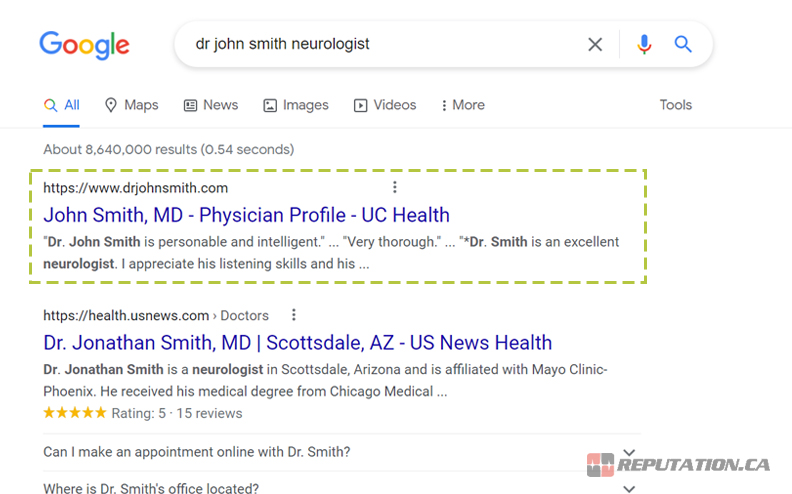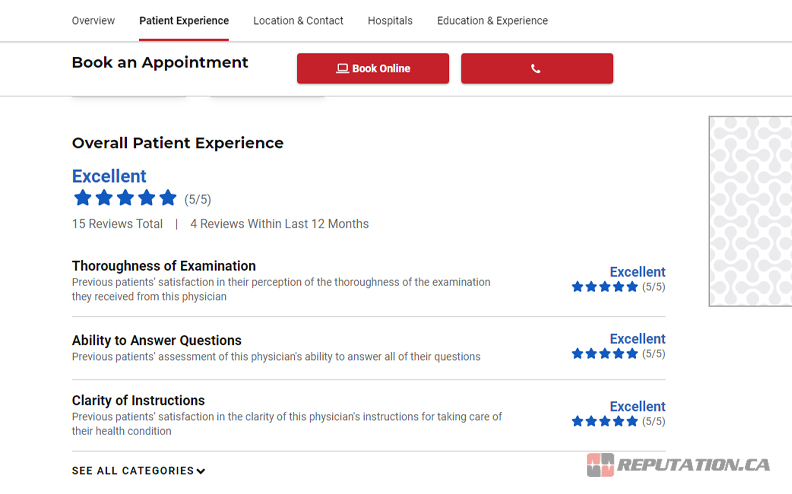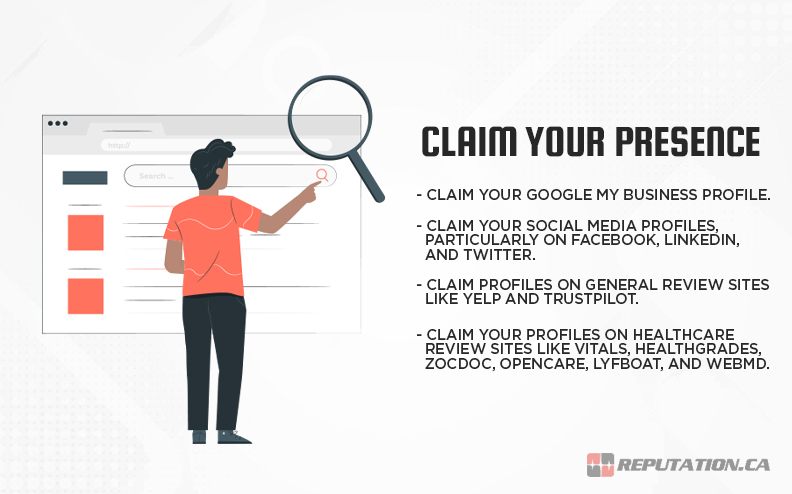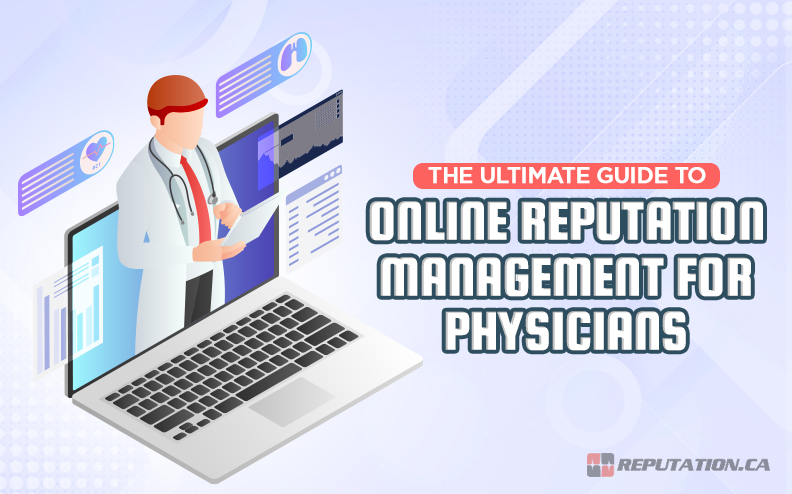In the past, medical providers didn’t need to care much about their reputations. Patients would visit whatever practice was most local to them, within their insurance networks where relevant, and would be seen by the doctor available.
The last decade or so has brought much more autonomy to the process. Patients no longer go with the first doctor to see them; rather, they take to the internet and to sites like Healthgrades, Vitals, or even just Google Maps. On these sites, they look up providers who meet their criteria and read reviews from other patients.
Patients today are concerned about many aspects of the healthcare process. They want to know that their physician is skilled, talented, and has a good bedside manner. They want to know that the office is not disorganized. They may have specific concerns about billing flexibility and insurance management, particularly in the USA’s whole healthcare situation.
All of this means that physicians need to pay more attention than ever to their reputations. A poor interaction with a patient doesn’t just cost you that patient; it can cost you numerous patients in the future if they leave a negative review on a popular review site.
Doctors have to content with all of the same problems businesses do.
- Negative reviews that blow a minor issue out of proportion or tell a skewed view of a story.
- Fake reviews from ambitious providers looking to take over the market.
- Generally poor reviews suppressing the number of patients choosing their practice.
The difference is, while a business can shuffle things around to pay someone to handle their reputation, a doctor’s office typically operates on a much more complicated and tight budget. You can’t always just pay for someone to handle your reputation online. That’s why, if you’re going to invest in reputation management, you need to make sure you’re doing it right.
Understand the Facets of Reputation Management
Modern online reputation management is about more than just reviews and testimonials. It’s about positioning yourself as a public authority, building trust with your potential audience, and minimizing the hazards of negative experiences. You do this in a number of different ways.
Review responses.
The first part of reputation management is all about testimonials and reviews. People, particularly when they’re motivated by either exceptionally good or exceptionally bad experiences, will leave reviews online. These reviews might be on sites like Yelp or Google, or they might be on specialized healthcare provider review sites like Vitals and Healthgrade.

It’s important, then, to discover the sites where you have profiles, claim those profiles, and monitor the responses your patients leave. When they leave reviews, you need to respond to those reviews.
- Positive reviews get a message of appreciation.
- Middling reviews get an acknowledgment and request for more information about what they didn’t like, if applicable.
- Negative reviews get outreach to try to solve whatever issue is causing the problem.
You can also make use of office data to cross-reference with the name of the reviewer and the details they state to verify that reviews are real.
Negative and fake review removals.

When fake reviews, or reviews with false information in them, are identified, it’s important to get them removed. They could be spam, or a deliberate attempt at slander, or a competitor trying to damage your reputation. Most sites that host user reviews have ways to filter, audit, and remove fake reviews, as well as options for you to report them and provide evidence that they’re false. The exact process will depend on the platform, however.
Social media engagement.

These days, doctors can’t simply do their job and trust that word will spread. You need to be publicly visible as an authority to attract attention and build your reputation. This is why the last few years have seen a surge in doctors and other providers making educational posts, videos, and infographics for networks like Facebook, Twitter, Instagram, TikTok, and YouTube. Taking part in social media is a powerful avenue for building authority and trust, but it requires significant investment in time and effort.
Content marketing.
Patients want to know that their doctor of choice is an expert in their chosen profession or specialty. One of the best ways to showcase this expertise is through the creation of expert content for a website. Your website can’t just be a place to offer a contact information page and a photo of your office; it needs to host content you create to help educate your patients about possible ailments and issues they could face, symptoms they should watch for, ways to avoid or minimize the risk of disease, and more.
This is very difficult due to the proliferation of both major content sites like WebMD and Healthline, as well as fringe misinformation sites that grow massive audiences. The best way to succeed is with local awareness and targeting, which often requires an expert marketer to pull off properly.

Content marketing is often part of long-term reputation building but may not be part of initial acute reputation management. You have bigger fish to fry when you’re dealing with negative reviews, establishing your presence, and getting your practice’s information correct across dozens of websites. That’s also part of why hiring someone to handle this for you is generally the better choice.
Reputation monitoring.

None of the above is a one-and-done thing. They are all ongoing processes that must be monitored and actively tweaked to continue to build and refine your reputation. Much like lifestyle and diet changes, reputation changes are a commitment.
Assess Your Existing Reputation
Your perception of your reputation, based on talking to your patients, might be very different from what people outside of your practice see. It’s important to take the time to assess your current reputation to determine if there are issues you need to confront or resolve. How can you do this?
Name-search yourself.
Open a new incognito or private browser window, and visit Google.com. Type in your name (and your specialty, if your name is common) to see what comes up.
It’s important to use an incognito window for this to avoid personalizing your search results and skewing what you see.
When you search for yourself, look for a few things:
- Mentions of your practice on websites other than your own. In particular, look for web forums, blog comments, and social media posts.
- Websites that host profiles for providers and allow users to leave reviews. Look for these sites and see if there are any existing reviews.
- Google business reviews. These will appear on the listing for your office on Google maps, and in the side knowledge bar.
You will generally see one of four different situations. You might have a positive existing reputation. You might have a mixed reputation or a negative reputation. Or you might have little or no reputation at all. Three of these four deserve attention and effort to fix.
You should also consider searching for the name of your practice as well, as your reputation can be tied to both your practice and your personal name.
Find your website.

Your practice’s website should be at the top or among the top results when you search for yourself or for the name of your practice. If your website is not a the top, try to find it. If you can’t find it at all, you may have indexation issues. If you can find it, but it’s numerous pages deep, you have ranking and visibility issues. Both of these can be solved through an audit and revision of your website but will require an effective marketer, website specialist, or reputation manager to handle.
Look for reviews.

Part of the initial name search was bringing up review sites like Healthgrades, Vitals, or Google. Now, you should take the time to read through these reviews. Look for attributes such as: are they positive or negative? Are they recent or older? Are there a lot of them or only a few? This is all information that will be important for optimizing your reputation later.
Claim Your Presence
Once you’ve determined what you’re working with, it’s time to start claiming your presence online. If you’ve ever paid attention to reputation management in the past, you may have done some or all of this already. If not, now is the time.
- Claim your Google My Business profile. This is among the most important profiles anyone with a public business or practice should claim.
- Claim your social media profiles, particularly on Facebook, LinkedIn, and Twitter. Other social networks can be relevant as well. You can also claim them with no intention of really using them, just to make sure you have the name saved later if it becomes relevant.
- Claim profiles on general review sites like Yelp and TrustPilot. These may not be medical-focused, but they are large and often the first stop for patients looking to leave a review.
- Claim your profiles on healthcare review sites like Vitals, Healthgrades, ZocDoc, Opencare, Lyfboat, and WebMD. These will be among your most important profiles to claim.

You can read more about this process, as well as a larger list of potential sites to check here.
When you claim your profiles, you will also want to ensure that your information is consistent across them. Make sure you choose to use either your personal name or your practice name, whichever is most relevant to you. Choose the specific title and formatting you use. Make sure other information, like address, phone number, and hours of operation, are consistent across sites.
Work on Solving Reputation Problems
Once you’ve claimed your presence, you need to implement reputation management strategies to start fixing issues and building a better reputation.
Begin by doing what you can to report and remove fake and bad reviews. Some won’t be removable, but many will. Report them and provide what information you can to prove they’re fake or defamatory.

For the negative reviews you can’t remove, reach out to the patient who left the review and see if you can make things right. The issue at hand can be any of a number of problems, from billing issues to poor reception to a negative interaction with you as the provider. It’s important to discover what those problems are, so you can take action to fix them.
Throughout this process, you will need to be actively monitoring and responding to reviews left on your profiles across the internet. These responses should follow the same classifications as above; acknowledgments and thanks for positive reviews, and outreach to solve the problem for negative reviews. At the same time, you should look for opportunities to solve systemic problems, like a receptionist who frequently comes across as rude, or persistent issues with your phone tree, your billing system, or your communication. Solving systemic issues helps remove problems before they can become problems.
Hire a Reputation Management Company
Online reputation management is extremely complex and highly specific to each individual’s situation. It can be a full-time job to start from analysis and proceed through reputation management techniques, and you certainly can’t afford the time to do it yourself when you have your duties as a physician to attend to.
The best alternative is to hire a reputation management company instead. Companies like ourselves can handle all of the above and more, more effectively than you can on your own. We have processes and connections in place to help remove negative reviews, as well as processes to more effectively solicit positive reviews from your satisfied patients. We can work with you to create content and build your position of authority, and we have tools to help monitor your reputation on an ongoing basis and take care of issues before they become indelible marks on your online presence.

You can’t do any of it if you don’t reach out, however. There’s no better time to get started with reputation management than right now. Additionally, please also reach out if you have any questions or concerns regarding reputation management or similar!











